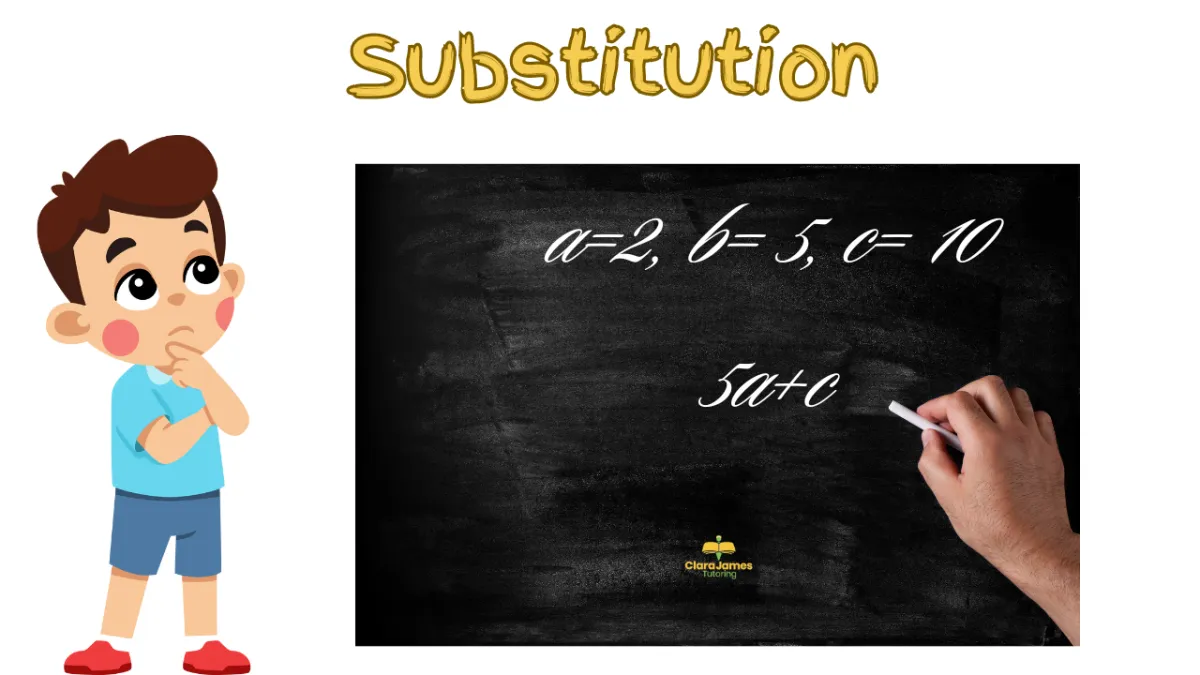
Substitution
Substitution means replacing the variable in an algebraic expression with a specific value (swapping a letter for a numerical value).
How to Do It:
1. Write down the expression.
2. Replace the variable with the given number.
3. Calculate the result using the order of operations (BIDMAS/BODMAS) ie. The order in which you are supposed to do things: brackets first, then indices or powers, division and multiplication, addition and subtraction. The reason for doing it in a set order means everyone will end up with the same answer.
Example:
Substitute x = 2 into the expression 3x + 4.
Replace x with 2, so (3x2) + 4 = 6 + 4 = 10.
Another harder example might be: 2a^2 + 3b
When a= 2 and b =5
This time start by squaring the a first (2x2=4)
Now we have to double this (multiply it by 2) to give us 8.
That is the first part sorted, so now we need to add 3b.
3b is the same as 3xb which in this instance is 3x5, 15.
Now we can add the 2 answers together to give us 15+8 =23
I hope this makes sense, any questions please do get in touch: [email protected]
Each week we send out an email on the Monday to support the parent's of primary school children working on maths and English, on the Thursday we also send out emails to the parents of secondary school parents. If you would like to receive either (or both) of these, do let me know and I will ensure you get it
